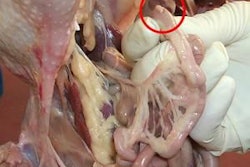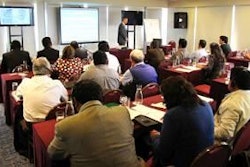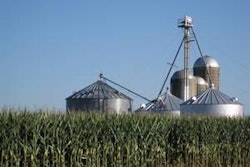Unlike its financial markets, Europe’s compound feed production is expected to be stable this year. The European Feed Manufacturers’ Federation (FEFAC) believes that output this year will be broadly similar to that recorded in 2009. This prediction, however, was made prior to the full extent of the problems in Greece becoming known, or the pressures building on a number of other European countries. We live in interesting times.
Whether the current financial difficulties in the region will act as a further drag on consumption and output is, as I write, about as clear as who will form the next UK government, but what has emerged is that compound feed output last year was lower, decreasing from a more or less stable 2008.
2009 lower
FEFAC estimates that compound feed production for the 27 members of the European Union, excluding Greece, Malta and Luxembourg, was down by 4.5% at 144 million tonnes. Turnover for the region is estimated at Euro 40 billion (US$51.9 billion).
This headline figure, however, much like the various European economies, hides a wide variety in performance across sectors. While the downturn has affected all animal species, production of cattle feed fared the worst, falling by 8%. Pig feed output contracted by 6%, while production of poultry feed fell by 1% in comparison with 2008.
These figures are provisional, but they are in line with FEFAC predictions made in April last year of a 5% contraction, and come in at the bottom end of the scale for the 4-8% estimate that had been made for the first three quarters of the year.
Four key factors have been identified as weighing particularly heavily on demand for compound feed last year.
Of particular importance, the dramatic crisis affecting the dairy sector triggered a severe contraction in demand for compound feed, particularly in the third and fourth quarters, while the continuation of the downward slope of the pig production cycle was amplified by financial difficulties for pig farmers.
Low market prices for cereals, resulted in higher on-farm usage, as farmers had few incentives to put their cereals on the market, and the general financial crisis, of course, also played its part, leading to lower consumer demand for products of animal origin, and a search for cheaper options.
France held the lead position as the largest producer of compound feed in Europe, accounting for 21.3% of the total. Germany accounted for 20.3%, Spain 18.6%, and the UK 14.2%.
2010 improvements?
FEFAC’s forecasters have identified as key drivers for the compound feed market in 2010 a continuation of the difficulties in the dairy sector, despite a modest increase in milk prices. On a more positive note, however, they see an end of the downward trend in the pig production cycle and a continued recovery in consumer demand for poultry products.
The current demand forecasts for the EU cereals harvest 2010 indicate relatively low quotations for new crop grains in 2010, while soybean meal prices are expected to remain stable, FEFAC believes. The announced decrease in global quotations due to record harvests in South America is likely to be offset by a less advantageous dollar/euro exchange rate. As a consequence, FEFAC experts foresee a further reduction in cattle feed production, falling by 1%, a stabilization of pig feed and slight increase in poultry feed production, up by 2%.
Overall, they say, compound feed production may remain at the low 2009 output level with risk of a further slight decrease. But we do live in interesting times. The steps to stop Greece’s troubles spreading, all be they late, have been greeted favorably by the markets, but all European countries will see money taken out of their economies as governments reign in spending.
This will clearly have an impact on consumer spending, but the political and social consequences could be far great. This is not an easy time to be making forecasts.


















